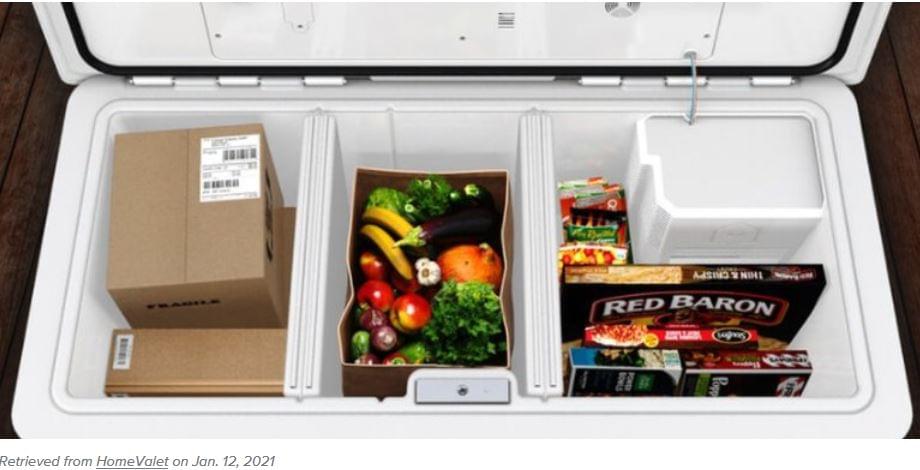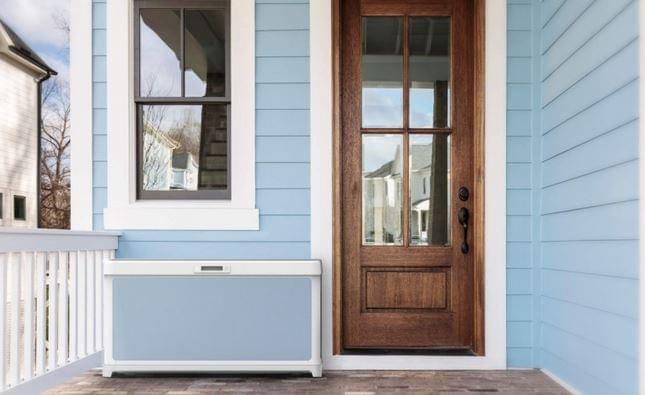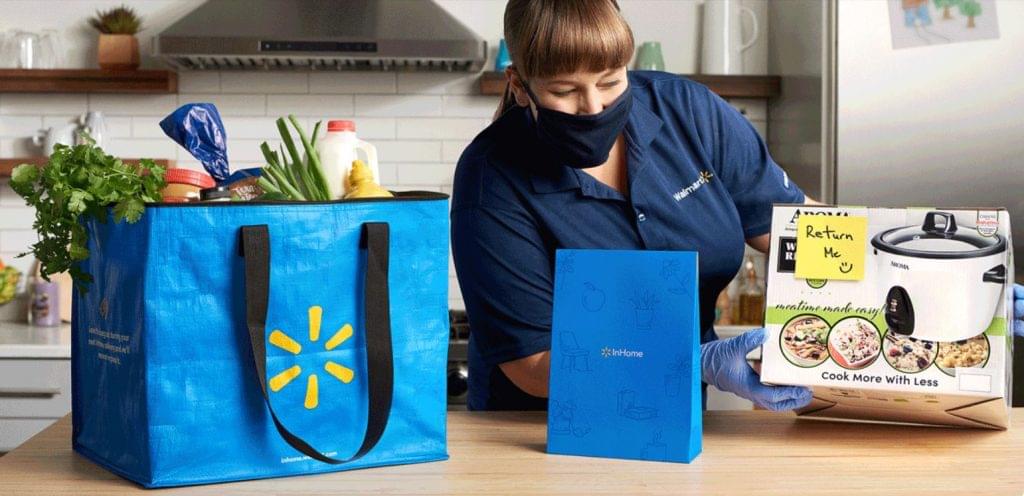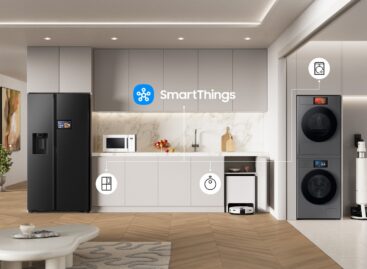Walmart tests smart box that stores grocery orders
Home delivery is convenient, loved by shoppers, but many are often not at home. The smart box, on the other hand, keeps the ordered products fresh until the customer arrives home and unpacks them. This solution will be tested by Walmart from spring.

Sam Walton, founder of Walmart, once said, “To succeed, stay out in front of change.” It’s why we’re continuously testing new technology, like drones and autonomous vehicles, to find new ways to serve customers. Which made us think – what if we could conveniently deliver fresh groceries to a customer’s front door any time of the day, whether they’re home or not? That’s what we’ll be exploring in our new pilot with HomeValet – writes in his blog Tom Ward, SVP of Customer Product, Walmart U.S.
Smart box placements
Beginning this spring, participating customers in Bentonville, Arkansas, will be able to receive deliveries from their local Walmart directly into a temperature-controlled HomeValet-powered smart box placed outside their home. This gives customers the ability to receive secure, contactless deliveries with the peace of mind knowing their grocery items will stay fresh.
HomeValet’s smart box is powered by an internet of things (IoT) platform that has three temperature-controlled zones, so it can properly store frozen, refrigerated and pantry items. And when it’s time for a delivery to be made, the smart box communicates with the delivery provider’s device, giving them secure access to the smart box to complete the delivery.
In addition to being able to maintain the cold chain, the box uses ultraviolet-C light to control mold and mildew and disinfect items after they are placed inside it. The box also uses the light to cleanse exposed surfaces after a customer removes the items.
Light in the UV-C range is able to kill pathogens including the virus that causes COVID-19, according to research published by the American Journal of Infection Control.

The idea has its limitations, it can be implemented in typical American suburbs, in detached houses, open gates or no fence environment. It is difficult to transpose into an urban environment or an Eastern European, “watch out for dog bites” approach.
In-home delivery
Walmart, which last year launched its Walmart+ premium membership service offering free delivery, among other perks, for $98 a year, is also testing in-home delivery in several cities. That pilot, which kicked off in 2019, relies on home access via smart locks or smart garage kits, and employees can place groceries inside customers’ refrigerators. The service is currently operating in Pittsburgh, Kansas City; Vero Beach, Florida; and West Palm Beach, Florida, though only customers in Pittsburgh are currently receiving deliveries in their kitchen due to the pandemic.

Related news
Security is a given: this is how Samsung smart devices support the security of our homes
🎧 Hallgasd a cikket: Lejátszás Szünet Folytatás Leállítás Nyelv: Auto…
Read more >Summer rejuvenation requires conscious decisions
🎧 Hallgasd a cikket: Lejátszás Szünet Folytatás Leállítás Nyelv: Auto…
Read more >Rapid test market, smart devices – where next?
🎧 Hallgasd a cikket: Lejátszás Szünet Folytatás Leállítás Nyelv: Auto…
Read more >Related news
KSH: industrial producer prices in November 2025 were on average 2.7 percent lower than a year earlier and 0.3 percent lower than the previous month’s prices
🎧 Hallgasd a cikket: Lejátszás Szünet Folytatás Leállítás Nyelv: Auto…
Read more >Employment at 4.5-year low
🎧 Hallgasd a cikket: Lejátszás Szünet Folytatás Leállítás Nyelv: Auto…
Read more >This is how we eat honey in 2026
🎧 Hallgasd a cikket: Lejátszás Szünet Folytatás Leállítás Nyelv: Auto…
Read more >







